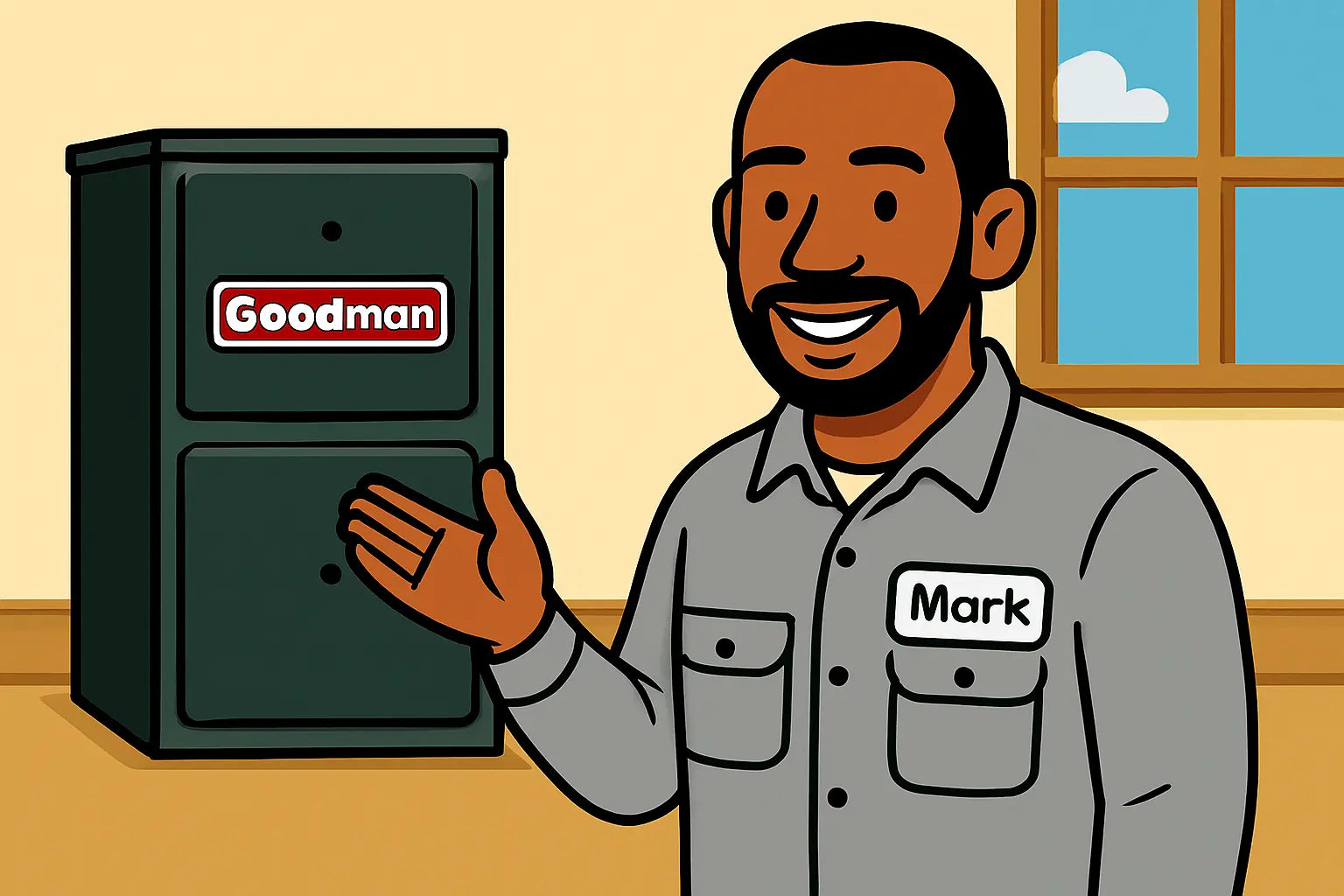Hey, Mark here 🔧
Let’s get real: messing with gas or electricity without a clue is a fast track to trouble. The Goodman GR9S960803BN is a high-performance furnace, but it only works safely if you respect the power and gas it relies on. Today, I’m going to walk you through what you need to know to handle gas connections, wiring, and safety precautions like a pro—without losing your cool. ⚡🔥
Section 1: Why Gas and Electrical Safety Matters
-
Gas safety: Leaks can be deadly. Proper connections, leak tests, and code compliance are essential.
-
Electrical safety: Incorrect wiring can cause fires, short-circuits, or damage to your control board.
-
Efficiency and reliability: Properly installed gas and electrical connections reduce stress on components and improve lifespan (HVAC.com safety tips).
Section 2: Gas Connection Safety
2.1 Tools and Materials You’ll Need
-
Approved black iron pipe or flexible gas connector
-
Pipe thread sealant or Teflon tape rated for gas
-
Gas leak detector solution or soapy water
2.2 Step-by-Step Gas Connection
-
Turn off the main gas supply
-
Measure and cut pipe to proper length
-
Apply sealant or Teflon tape to threads
-
Connect pipe securely to furnace gas valve
-
Open gas slowly and check for leaks with a soap solution
2.3 Conversion Kit Awareness
-
If switching from natural gas to propane, use the official Goodman conversion kit and follow the manufacturer instructions (Goodman GR9S960803BN manual)
-
Never attempt conversions without the proper kit and knowledge
Section 3: Electrical Safety
3.1 Power Requirements
-
Confirm voltage and amperage match furnace specifications
-
Use a dedicated circuit with proper breaker size
-
Always turn off power at the breaker before servicing
3.2 Wiring Best Practices
-
Follow the schematic in the manual exactly
-
Ensure secure connections to the control board and blower motor
-
Avoid pinched wires, sharp bends, or contact with metal edges
3.3 Safety Devices
-
Confirm the function of limit switches, rollout switches, and fuses
-
These components prevent fires and overheating
-
Test switches periodically to ensure they trip properly (The Spruce HVAC safety guide)
Section 4: Common Mistakes to Avoid
-
Using the wrong type of gas connector
-
Failing to check for leaks
-
Improper wire gauge or connections
-
Skipping breaker or fuse protection
-
Ignoring manufacturer warnings
Section 5: How to Test Your Furnace Safely
-
Power up the furnace after all gas and electrical connections are secured
-
Observe ignition sequence carefully
-
Check for unusual odors (gas, burning wire insulation)
-
Use a multimeter to verify voltage and current to key components
-
Listen for abnormal noises from blower or inducer motor
Reference: Better Homes & Gardens furnace safety checklist
Section 6: Professional Assistance
Even if you’re comfortable with DIY, some things are best left to licensed professionals:
-
Gas valve replacement or repair
-
Heat exchanger inspection
-
Complex wiring or control board troubleshooting
Calling a pro when in doubt protects your family, your furnace, and your wallet.
Section 7: Long-Term Safety Tips
-
Schedule annual inspections
-
Replace filters regularly
-
Keep the area around the furnace clean and clear
-
Maintain proper venting and clearance
-
Document any repairs or adjustments for warranty and future reference
Outro from Mark!
There you go—a full guide to gas and electrical safety for your Goodman GR9S960803BN. Respect the gas, respect the wires, and you’ll enjoy a safe, reliable furnace for years to come.
If you’re ready to get your hands on one of these high-efficiency units, check out the Goodman 96% AFUE 80,000 BTUs GR9S960803BN here.
Need more installation and troubleshooting tips for this unit? Visit my guide right here!
Stay safe, stay warm, and remember: safety first, always. 🔧🔥✌️
- Mark, your go-to HVAC guide!







